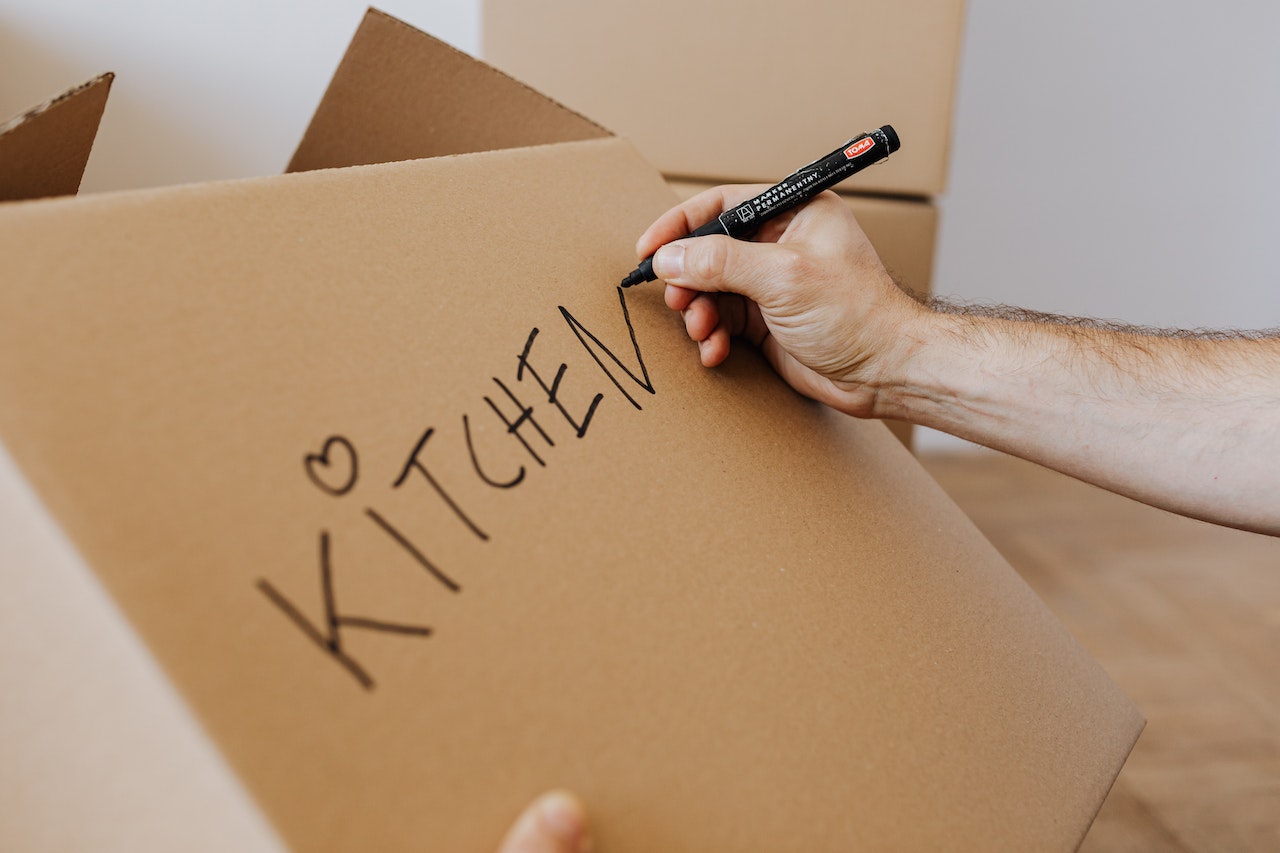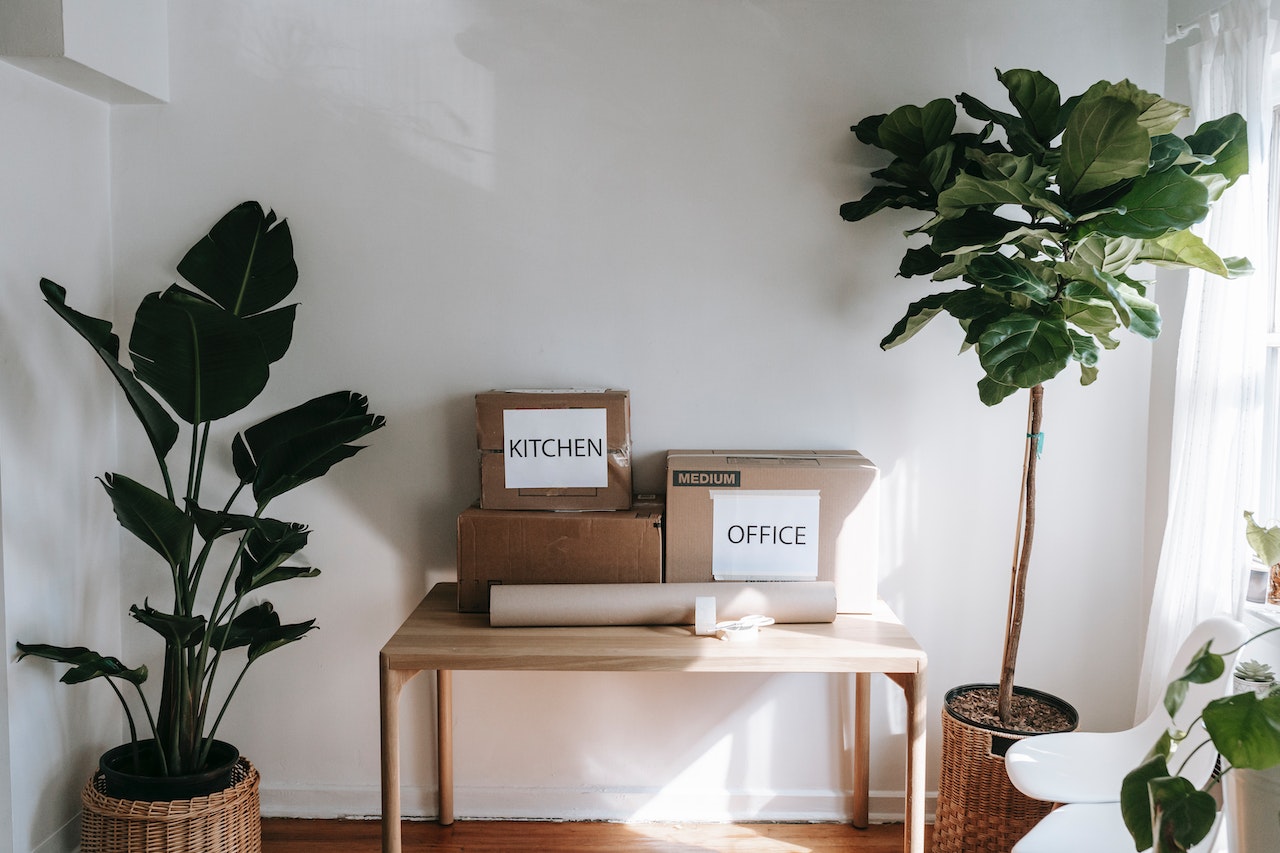
Moving to a new home is an exciting adventure, but getting there can be a logistical puzzle. Whether relocating across town or embarking on a cross-country journey, packing is the key to a successful move. Following the advice for packing room by room and expert tips we’ve gathered here, you’ll unlock the secret to a well-organized, stress-free move.
The Kitchen: Where to Start
When tackling the kitchen, the first step is decluttering and minimizing your kitchen items. Firstly, go through all the cabinets and drawers. Donate or discard those gadgets you haven’t used in years. Consider what’s essential, and keep what you love and use regularly.
Next, gather the essential packing supplies for the kitchen. You’ll need sturdy boxes in various sizes, packing paper, bubble wrap, packing tape, and markers. These items will help protect your kitchen treasures during the move. Packing fragile items and appliances is a delicate task. Start with your fragile glassware and dishes. Wrap each piece in packing paper or bubble wrap and place them snugly in boxes, adding crumpled paper for extra cushioning.
For small appliances, like blenders or mixers, secure their attachments and cords, then wrap them in packing paper before placing them in boxes. Don’t forget to label and organize your kitchen boxes as you go. Mark each box with its contents and destination room. Designate a box for essential items you’ll need immediately in your new home, such as coffee makers or utensils. Keep these boxes separate and easily accessible during the move.
You can begin packing once you create a plan and find packing supplies.

Living Room and Dining Room: Preserving Your Treasures
Preserving your treasures in the living room and dining room begins with handling delicate furniture and decor with utmost care. Start by removing any fragile or valuable items from display shelves and tables. Wrap these items in soft, protective materials like bubble wrap or blankets, securing them with tape. Disassemble furniture when possible, and use furniture blankets or padding to prevent scratches and dings.
Regarding electronics and entertainment systems, prioritize their safety during the move. Disconnect all cords and cables and label them for easy reassembly. Place electronics in their original packaging or use padded boxes designed for electronics. Ensure that fragile screens or delicate components are protected with extra padding.
Dealing with valuable or sentimental items requires special attention. These items might include family heirlooms, antiques, or irreplaceable artwork. Consider transporting them personally or using a specialized moving service. For smaller valuable items, like jewelry or collectibles, keep them with you in a secure bag or box during the move.
- Remove any fragile items from display shelves
- Place electronics in their original packaging
- Keep jewelry in a secure box or bag
Bedrooms: Ensuring a Seamless Transition
Ensuring a seamless transition in your bedrooms begins with sorting and downsizing clothing and personal items. Start by going through your wardrobe and drawers, donating or discarding items you no longer wear or need. This step lightens your load and makes unpacking at your new home easier.
When it’s time to pack bedding, mattresses, and bedroom furniture, take precautions to protect them during transit. For example, you can use mattress covers to shield your mattresses from dust and dirt. Disassemble larger pieces of furniture if possible, and wrap them in furniture blankets to prevent scratches or damage. Store smaller items, like pillows and linens, in labeled boxes for easy access upon arrival.
Labeling and organizing your bedroom boxes is crucial for a smooth move. Mark each box with its contents and the room it belongs to. Consider color-coding or numbering the boxes to make the process even more efficient. Create an inventory list to track what’s inside each box, making it easier to find specific items when settling into your new bedroom.
- Sort and downsize clothing
- Disassemble larger furniture pieces
- Label and organize bedroom boxes
Bathrooms: Packing Essentials for Daily Life
Regarding bathrooms, packing essentials for daily life is essential for a smooth transition. Start by sorting toiletries and medicines. Go through your bathroom cabinets and drawers, discarding expired items and consolidating what you need. Securely pack toiletries in sealable bags to prevent leaks during the move. Safely packing bathroom fixtures and mirrors is crucial. For fragile items like glass shelves and mirrors, use bubble wrap or cardboard to shield them from damage.
Remove fixtures such as towel racks and shower heads to prevent them from breaking in transit. To ensure immediate comfort in your new home, prepare a “first-night” box. This box should contain the essentials you’ll need on your first night, including toilet paper, towels, soap, and a change of clothes. Having these items readily accessible can make your first night in your new space much more comfortable.
Packing the bathroom essentials may seem simple, but it plays a significant role in ensuring your daily life continues seamlessly during your move. Sorting toiletries and medicines reduces clutter and ensures you have what you need when you arrive. Safely packing fixtures and mirrors preserve their condition, and a well-prepared “first-night” box guarantees you can freshen up and relax in your new bathroom from day one.
- Discard expired items
- Pack toiletries in sealable bags
- Safely pack fixtures and mirrors
Carefully wrap your fragile items to protect them during transport.

Home Office or Study: Protecting Your Work
Protecting your work in the home office or study is paramount when packing room by room. First, organize and pack office supplies systematically. Gather your pens, papers, and other supplies into clearly labeled boxes, making it easy to locate them when you’re ready to set up your new workspace.
Next, safeguard your computers, files, and valuable documents. Before disconnecting your computer, back up all essential files to ensure nothing is lost in transit. Wrap your computer and peripherals in anti-static bubble wrap, securing them snugly in specially designed computer boxes. Use secure containers or filing boxes to keep documents and files organized and protected.
To further enhance the safety of your work-related items, create an inventory. List all the essential items you’re packing, from hardware to important documents. Keep this inventory with you during the move, making it easier to account for everything once you arrive at your new home. Additionally, consider storing digital copies of crucial documents in a secure, cloud-based system for added peace of mind.
Garage and Storage Spaces: Tackling the Last Frontier
Tackling the last frontier of your move can be a formidable task. It begins with sorting through years of accumulated items. Take the time to declutter these areas ruthlessly, donating or disposing of items you no longer need or use. Doing so will save space, time, and energy during your move. Safety is paramount when it comes to storing hazardous materials.
Properly identify and separate paints, chemicals, or flammable materials. Dispose of hazardous waste responsibly, following local regulations. For items you must keep, ensure they are sealed tightly in secure containers to prevent leaks or accidents during transit.
Proper sealing helps protect your belongings from dust and damage during the move. Furthermore, hiring movers in California and searching for reputable moving services ensures you don’t have to worry about the safety of your things. Finally, properly labeling and sealing boxes simplifies unpacking, allowing you to find what you need quickly and efficiently.
Packing Miscellaneous Items and Wrapping Up
Dealing with odds and ends in miscellaneous spaces can be challenging, but it’s crucial to a successful move. Begin by packing items from hallways, closets, and hallways. These areas often accumulate forgotten treasures and clutter. Carefully assess each item, deciding whether it’s worth taking to your new home. Donate or discard items you no longer need to lighten your load.
When it comes to handling fragile artwork and collectibles, extra care is essential. Use packing materials like bubble wrap, custom-sized boxes, and packing paper. Ensure that delicate pieces are well-padded and securely boxed. Label these boxes as fragile to alert movers to handle them with care. Lastly, consider ideas for repurposing unwanted items. Instead of simply discarding them, explore creative options like selling, donating, or recycling. That reduces waste and provides an opportunity to give new life to items you no longer require.
As you wrap up your move preparations, remember the importance of a master inventory list. This comprehensive record will help you keep track of all your belongings and ensure nothing gets left behind. Plan for the actual move day by coordinating with movers or friends assisting you. If you’re up for the challenge, decide whether to hire professional movers for a hassle-free experience or a DIY approach.
When packing room by room, remember to mark the boxes.

Conclusion of Packing Room by Room
In the grand symphony of moving, the art of packing room by room is your harmonious melody. With our comprehensive guide, you’ve learned how to navigate the unique challenges of each space, from the kitchen to the garage. By decluttering, organizing, and safeguarding your belongings, you’ll transform moving from chaos into a well-orchestrated performance. Say goodbye to the stress and visit aclearpath.net to discover more ways to achieve an organized transition to your new home.
